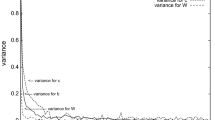Abstract
Extreme learning machine (ELM) algorithm is used to train Single-hidden Layer Feed forward Neural Networks. And Deep Belief Network (DBN) is based on Restricted Boltzmann Machine (RBM). The conventional DBN algorithm has some insufficiencies, i.e., Contrastive Divergence (CD) Algorithm is not an ideal approximation method to Maximum Likelihood Estimation. And bad parameters selected in RBM algorithm will produce a bad initialization in DBN model so that we will spend more training time and get a low classification accuracy. To solve the problems above, we summarize the features of extreme learning machine and deep belief networks, and then propose Incremental extreme learning machine based on Deep Feature Embedded algorithm which combines the deep feature extracting ability of Deep Learning Networks with the feature mapping ability of extreme learning machine. Firstly, we introduce Manifold Regularization to our model to attenuate the complexity of probability distribution. Secondly, we introduce the semi-restricted Boltzmann machine (SRBM) to our algorithm, and build a deep belief network based on SRBM. Thirdly, we introduce the thought of incremental feature mapping in ELM to the classifier of DBN model. Finally, we show validity of the algorithm by experiments.





Similar content being viewed by others
Explore related subjects
Discover the latest articles, news and stories from top researchers in related subjects.References
Erhan D, Bengio Y, Courville A et al (2010) Why does unsupervised pre-training help deep learning. J Mach Learn Res 11:625–660
Hinton GE, Sejnowski TJ (1983) Optimal perceptual inference. In Proc. CVPR1983. Washington DC, pp 448–453
Hinton GE (2002) Training products of experts by minimizing contrastive divergence. Neural Comput 14(8):1711–1800
Hinton GE, Osindero S, Teh YW (2006) A fast learning algorithm for deep belief nets. Neural Comput 18(7):1527–1554
Lv Q, Dou Y, Niu X et al (2014) Remote Sensing Image Classification Based on DBN Model. J Comput Res Dev 51(9):1911–1918
Honglak L, Rajesh R, Andrew YN (2011) Unsupervised learning of hierarchical representations with convolutional deep belief networks. Commun ACM 54(10):95–103
Huang GB, Zhu QY, Siew CK (2006) Extreme learning machine: theory and applications. Neurocomputing 70:489–501
Ding SF, Ma G, Shi ZZ (2014) A novel self-adaptive extreme learning machine based on affinity propagation for radial basis function neural network. Neural Comput Appl 24(7–8):1487–1495
Wang XZ, Shao QY, Qing M et al (2013) Architecture selection for networks trained with extreme learning machine using localized generalization error model. Neurocomputing 102(2):3–9
Huang G, Song S, Gupta JND et al (2014) Semi-supervised and unsupervised extreme learning machines. IEEE Trans Cybern 44(12):2405–2417
He Q, Jin X, Du CY et al (2014) Clustering in extreme learning machine feature space. Neurocomputing 128:88–95
Fu AM, Wang XZ, He YL et al (2014) A study on residence error of training an extreme learning machine and its application to evolutionary algorithms. Neurocomputing 146(1):75–82
Wang XZ, Chen AX, Feng HM (2011) Upper integral network with extreme learning mechanism. Neurocomputing 74(16):2520–2525
Zhang N, Ding SF, Shi ZZ Denoising Laplacian multi-layer extreme learning machine. Neurocomputing (to be published)
Huang GB, Zhu QY, Siew CK (2004) Extreme learning machine: a new learning scheme of feed-forward neural networks. In: Proc. IJCNN2004, Budapest, pp 25–29
Osindero S, Hinton GE (2008) Modeling image patches with a directed hierarchy of Markov random fields. Adv Neural Inf Process Syst, pp 1121–1128
Salakhutdinov R (2009) Learning deep generative models. Topics Cogn Sci 3(1):74–91
Salakhutdinov R (2008) Learning and evaluating Boltzmann machines. In: Technical Report UTML TR, Department of Computer Science, University of Toronto
Tieleman T (2008) Training restricted Boltzmann machines using approximations to the likelihood gradient. In: Proc. ICML’08. New York, pp 1064–1071
Tieleman T, Hinton GE (2009) Using fast weights to improve persistent contrastive divergence. In: Proc. ICML’09. New York, pp 1033–1040
Belkin M, Niyogi P, Sindhwani V (2006) Manifold regularization: a geometric framework for learning from labeled and unlabeled examples. J Mach Learn Res 7(3):2399–2434
Huang GB, Chen L, Siew CK (2006) Universal approximation using incremental constructive feedforward networks with random hidden nodes. Neural Netw IEEE Trans 17(4):879–892
Norouzi M, Ranjbar M, Mori G (2009) Stacks of convolutional restricted Boltzmann machines for shift-invariant feature learning. In: Proc. CVPR2009, Miami, FL, pp 2735–2742
Acknowledgments
This work is supported by the National Natural Science Foundation of China (No. 61379101), and the National Key Basic Research Program of China (No. 2013CB329502).
Author information
Authors and Affiliations
Corresponding author
Rights and permissions
About this article
Cite this article
Zhang, J., Ding, S., Zhang, N. et al. Incremental extreme learning machine based on deep feature embedded. Int. J. Mach. Learn. & Cyber. 7, 111–120 (2016). https://doi.org/10.1007/s13042-015-0419-5
Received:
Accepted:
Published:
Issue Date:
DOI: https://doi.org/10.1007/s13042-015-0419-5




